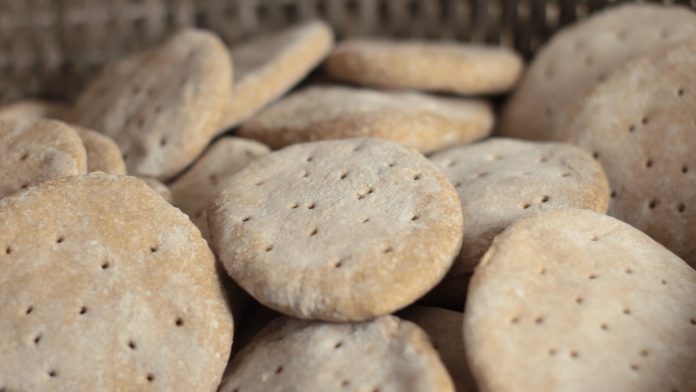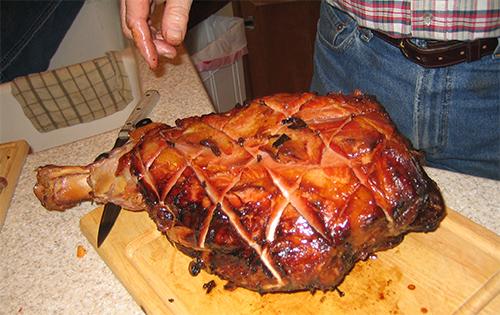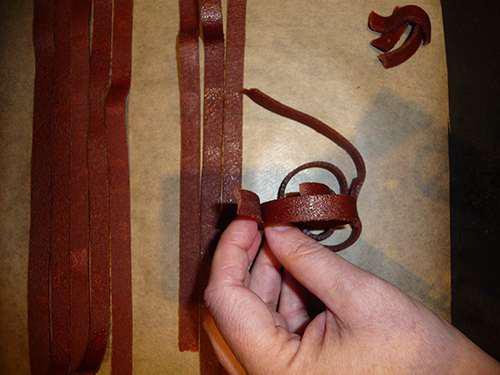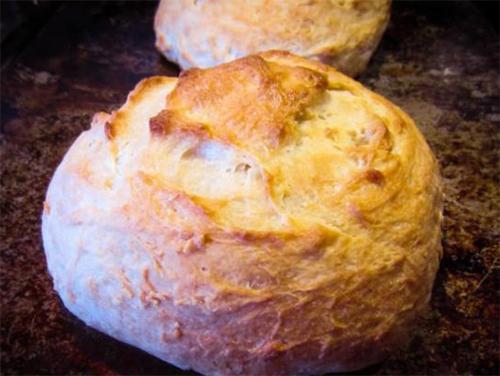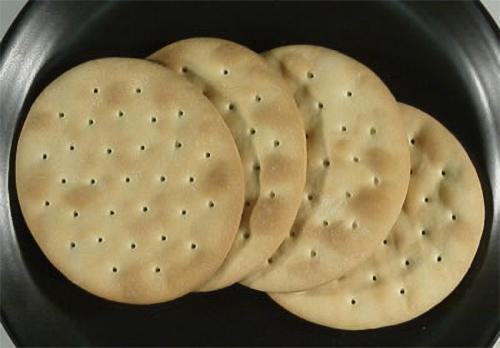6 Survival Food Recipes to Make and Forget
For farmers around the world, growing food and raising meat is becoming even more difficult. We are seeing more crop loss and livestock losses than ever between radical shifting weather conditions and disease. Since we have large populations to feed, the numbers are big. Such populations are only rising.
For many preppers and homesteaders, it is just part of daily life to grow and make our own food. It is extremely liberating and brings a new kind of liberty into your life. It is the secret to having a good life.
Cooking at home can be about survival and prepping, as much as it can be about dinner tonight. Since they have such a long shelf life, some foods you can make and forget. I have compiled 6 survival food recipes to make and forget.
If you don’t believe you have what it takes to make delicious fresh bread at home, give them all a try, but especially the peasant bread.
Virginia Ham
One of those skills that any prepper should at least consider is the preservation of ham. Whether it isn’t something you’ve done before. It’s a very easy process, but the seasons need a lot of time and some timing.
Ingredients
- 1 Pork Picnic
- 1 LB of Salt
- 1 Cup of Whisky
Directions
- In most climates, you are going to want to start this process around September at the earliest.
- In a large container or a large unscented trash bag place your pork and cover it completely with your salt.
- Keep this in the refrigerator for 30 days. You may need to add more salt to the pork as the month goes on to keep it covered.
- After a month you are going to wipe the salt of the curing pork and then pour the whiskey over top. Now wrap it up in a few layers of cheesecloth, a large kitchen towel or a chef jacket. You are going to hang this for the next 6 months in an area that is covered from the sun and has some decent airflow.
- Therefore, it’s important to time things just right. You do not wanna be hanging a ham through the summer.
- Unwrap your ham after 3 months to check the ham out. You might need to cut some mold off the ham. Wrap it again and let hang for another 3 months.
Estimated Shelf Life: 5 years if left wrapped and uncut.
Kimchi
This spicy fermented mixture of cabbage is a sweet and spicy treat as well as an excellent probiotic food for the well-being of your stomach.
Kimchi will be preserved underground in covered earthenware pots in the Korean tradition and allowed to ferment for decades! While you may do things that are counterintuitive to traditional cooking techniques, Kim Chi is simple to make.
It’s all part of the method of fermentation.
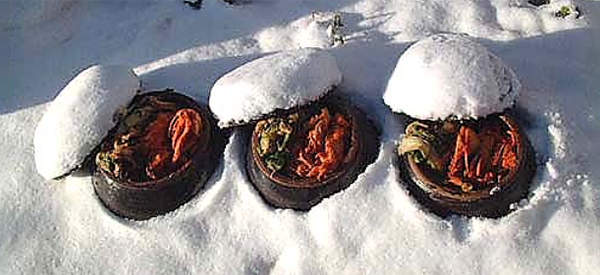
Ingredients
- 1 head of Napa Cabbage
- 5 Cloves of Garlic
- 1 Heaping TBSP of Korean Ground Chili
- 2 TBSP of Soy Sauce
- 1 Large Thumb Sized Piece of Ginger
Directions
- Start by mincing your garlic and ginger.
- Next, you are going to cut the core out of your cabbage and slice it in half. Slice the halves, starting at the top, in quarter-inch slices.
- Place the cabbage into a colander and salt it heavily. Toss the cabbage to incorporate the salt and then allow this to sit and drain overnight.
- The next day you are going to rinse your cabbage and add it to a big bowl Add the rest of the ingredients and mix thoroughly. Place this mix in mason jars with the lid just lightly screwed on. Allow this mix to ferment for 4 days in the dark pantry.
- You can store it in the fridge after this and leave it to ferment for as long as you like.
- If we experience an off-grid situation you would need only remove these from the fridge and bury them underground.
Estimated Shelf Life: Indefinitely.
Fruit Leather
For preppers, dehydration is a great part of food preservation. One of the most essential aspects of bacterial growth is eliminated by the ability to extract moisture from food. That is why it deals so well for dehydration. You will find 50 foods here which you can dehydrate at home.
Fruit leather is a perfect way to use lots of fruit and make wonderful food that will last until you need it most on the shelf. Fruit leather, including granola and fruit bars, is also a perfect addition to many other recipes.
Making fruit leather is a fairly easy process and you can get there if you have some fruit and sugar.
Ingredients
I like ratios and I would rather people remember ratios than any recipe. If you understand ratios than you can recreate things easily. In this case, we are talking about the fruit to sugar ration.
- 2 Parts Fruit: 1 Part Sugar
- 4 cups of strawberries
- 2 cups of sugar
Directions
- Preheat the oven to 180 degrees.
- In a large sauce pot place your ingredients. Simmer until you can smash the fruit and sugar into a smooth purée.
- Using a tablespoon, smooth some purées out onto a sheet pan that is lined with good wax paper or a Silpat.
- Cook that purée in the oven for about 6-7 hours until it is completely dry.
- Let it cool and cut the fruit purée in the shape you would like to.
Estimated Shelf Life: 4 years.
Biltong
This is a South African meat preservation method that focuses on the use of vinegar. The word Biltong is Greek and means bed bug!
That is because the coriander seeds, a necessary ingredient, resembled little bed bugs.
Ingredients
- 5 LBS of Lean Meat
- 5 TBSP of Malt or Cider Vinegar
- 3 TSP of Coarse Salt
- 2 TSP of Black Pepper
- 2 TBSP of Coriander Seeds
Directions
- Start by toasting your coriander seeds to bring them back to life. In a spice grinder or mortar and pestle bash them up a bit. You can even add the vinegar to this.
- Slice your meat against the grain into 1-inch pieces and place it in a non-reactive container.
- Now dump the rest of the ingredients over top of the meat and allow that mix to sit in the fridge for at least 12 hours. 24 hours wouldn’t hurt.
- Remove the meat from the container and gently pat it dry on a plate. Be careful not to remove all the pepper and coriander.
- Next, you are going to hang this meat, most likely in your fridge with some twine between racks. If you get a few days of cool temperatures, you could hang it outside, but you are gonna want to cover it with cheesecloth to avoid bug infestation. Fridge works great.
- Check it every few days. You want the entire piece of meat to be hard. If it has some give or feels mushy at the center than you are going to have raw meat inside. Let it cure for a few more days.
Estimated Shelf Life: Approximately 10 years.
Peasant Bread
You know that I put an intense emphasis on being able to cook from scratch if you’ve read my posts in the past.
It does not carry the weight of things such as military planning or communications in the prepper culture, but it is a burden that someone would need to inherit 3 times/365 days a year in a SHTF situation.
This is the best technique for making bread dough and should be part of the recipe book of any homesteader or prepper.
Ingredients
- 4 Cups of Flour
- 2 TSP of Salt
- 2 TSP of Sugar
- 2 Packets of Dry Yeast
- 2 Cups of Warm Water
Directions
- Start in a large metal bowl with all your dry ingredients. Mix them thoroughly before adding your warm water. Mix this all together to create a sticky ball of dough.
- Cover the bowl with a damp towel and in about an hour your dough will have doubled in size.
- Beat the dough down with the spatula and it will deflate.
- Now transfer it to your baking vessel, most people use an oven-safe glass or ceramic bowl. Allow this mix to rise to the rim of the bowl before baking for about 20 minutes in a 375-degree oven. The top should be golden brown and delicious.
Estimated Shelf Life: Approximately 3 years.
Pilot Crackers
When you read about something called two pilot crackers you probably think two things:
1. They were made for pilots.
2. They are basically flavorless crackers.
The funny thing about pilot crackers is that they were actually created for seagoing by a man named John Pearson in 1792. The recipe is Nabisco’s oldest!
If you like crackers, you will find the pilot cracker to be a great vehicle for spreads and even preserved meats.
Ingredients
- 2 Cups of Flour
- ¾ of a Cup of Water
- 1 Tablespoon of Lard
- ½ Teaspoon of Salt
Directions
- Mix all the ingredients in a bowl until thoroughly incorporated. This can be done in a mixer or by hand.
- Rest the dough in the fridge for about 10 minutes to allow the lard to harden up again.
- Roll the dough out to about ¼ inch and use a circle mold or a small cup to punch crackers out at the desired size.
- Bake them for 15 minutes in a 400-degree oven and allow them to cool completely before trying to remove them.
Estimated Shelf Life: Indefinitely.
TIP: For even more extended storage, you can store them in Mylar bags with oxygen absorbers.
There is no end on making many survival meals! For long term, these are 6 perfect foods to learn how to make and store.
These foods concentrate on many essential techniques of cooking, such as dough making, curing, dehydrating and baking.
You would certainly be prepared for the next disaster if you can load your pantry with food that you can make and forget. If you can master the techniques, however, then you will be able to eat for a long time.
Stuff like the biltong could be made with beef or with venison that you hunted.
Your stored wheat could be used to make these crackers or peasant bread.
Try your hand on the above recipes and let us know how things worked out in the comments below!
All storage methods are simple, but all foods can last forever if Oxygen absorbers & Mylar bags were used.
For farmers around the world, growing food and raising meat is becoming even more difficult. We are seeing more crop loss and livestock losses than ever between radical shifting weather

